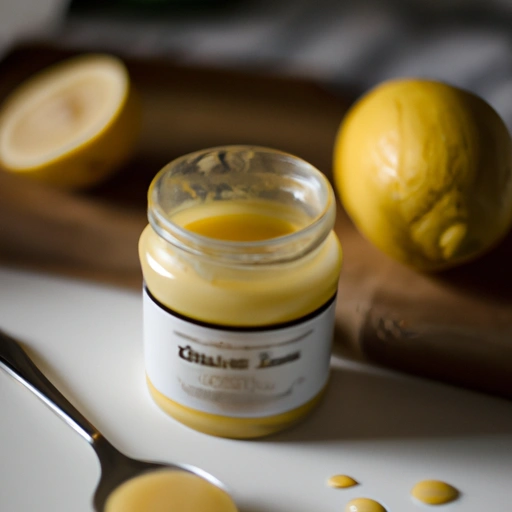Lemon Curd
Description

Lemon curd is a decadent, smooth, and rich spread that boasts a vibrant citrus flavor. It's made by gently cooking a mixture of fresh lemon juice, sugar, butter, and eggs until it thickens to a luscious, creamy consistency. The balance of tartness and sweetness makes it an irresistible addition to various culinary creations. Lemon curd is versatile in its use, often enjoyed as a spread, topping, or ingredient in a range of desserts.
Common uses
Lemon curd is commonly used as a spread on toast, scones, muffins, or pancakes. It also serves as a filling for tarts, lemon meringue pie, cakes, and doughnuts. Moreover, it is an ideal topping for yogurt, ice cream, or blended into smoothies for a zesty twist.
Nutritional value
Calories
Typically, a tablespoon (about 15g) of lemon curd contains approximately 55 calories (230 kJ).
Protein
Lemon curd provides about 0.5 grams of protein per tablespoon.
Fat
Each tablespoon contains around 2 grams of fat, mostly from the butter content.
Carbohydrates
Carbohydrates are present at about 10 grams per tablespoon, mainly from sugars.
Vitamins
Lemon curd is a good source of Vitamin C and smaller amounts of other vitamins such as Vitamin A and B vitamins due to the presence of lemon juice and eggs.
Minerals
It contains trace amounts of minerals such as calcium, potassium, and magnesium.
Health benefits
The lemons in lemon curd provide vitamin C, which is essential for a healthy immune system, wound healing, and the absorption of iron. The eggs contribute a small amount of protein necessary for building and repairing tissues. However, due to its high sugar and fat content, lemon curd should be consumed in moderation.
Potential risks
As lemon curd is rich in sugar and butter, it's high in calories and saturated fats, which may contribute to weight gain and increased cholesterol levels if consumed excessively. Individuals with dietary restrictions or sensitivity to eggs or dairy should also be cautious.
Common recipes
Lemon curd is featured in recipes like lemon bars, tarts, cakes, and as a filling for pastries and macarons.
Cooking methods
The traditional method for making lemon curd involves gently heating the ingredients over a double boiler to avoid curdling the eggs. It can also be prepared using a microwave for a quicker alternative.
Pairing with other ingredients
This ingredient pairs well with fresh berries, whipped cream, and almond-flavored desserts. It also complements the flavors of coconut, ginger, and vanilla.
Summary
Lemon curd is a delightful and flavorful spread that has transcended its British origins to become a beloved ingredient worldwide. It's a versatile confectionery that can enhance both sweet and savory dishes. While it offers certain nutritional benefits, it's best enjoyed in moderation due to its sugar and fat content.